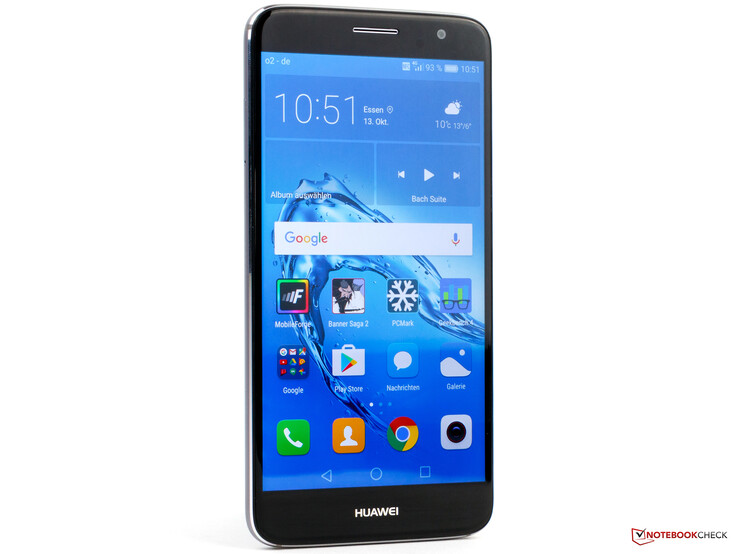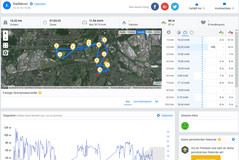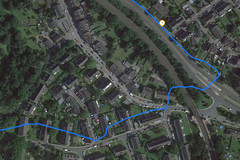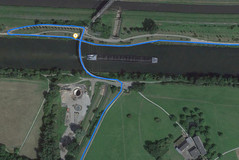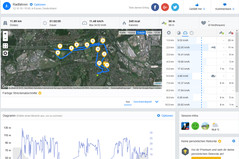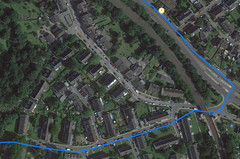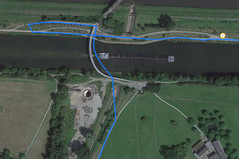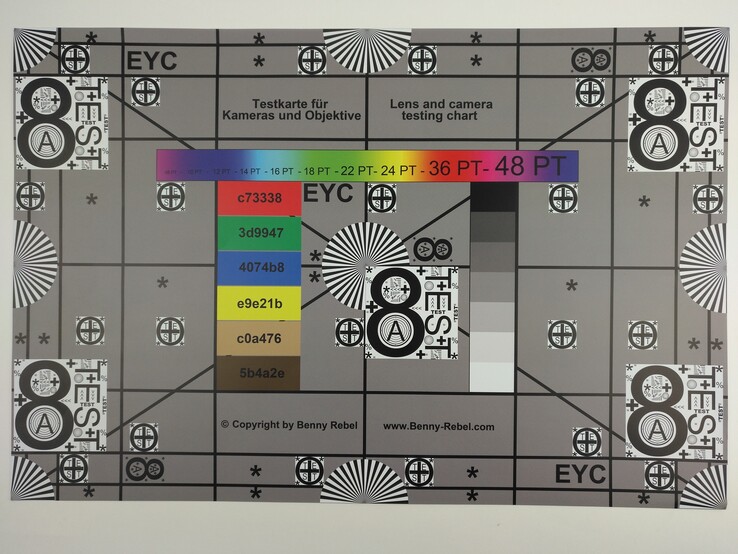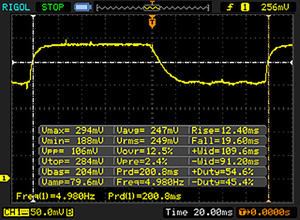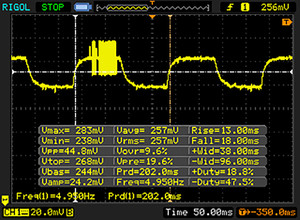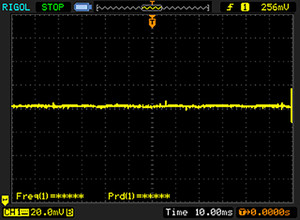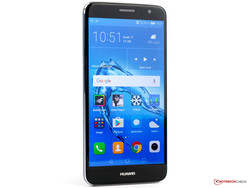Breve Análise do Smartphone Huawei Nova Plus
Os Top 10
» Os Top 10 Portáteis Multimídia
» Os Top 10 Portáteis de Jogos
» Os Top 10 Portáteis Leves para Jogos
» Os Top 10 Portáteis Acessíveis de Escritório/Empresariais
» Os Top 10 Portáteis Premium de Escritório/Empresariais
» Os Top 10 dos Portáteis Workstation
» Os Top 10 Subportáteis
» Os Top 10 Ultrabooks
» Os Top 10 Conversíveis
» Os Top 10 Tablets
» Os Top 10 Smartphones
» A melhores Telas de Portáteis Analisadas Pela Notebookcheck
» Top 10 dos portáteis abaixo dos 500 Euros da Notebookcheck
» Top 10 dos Portáteis abaixo dos 300 Euros
Size Comparison
| Networking | |
| iperf3 transmit AX12 | |
| OnePlus 3 | |
| ZTE Axon 7 | |
| Lenovo Moto Z Play | |
| Huawei Nova Plus | |
| Asus Zenfone 3 ZE552KL | |
| iperf3 receive AX12 | |
| ZTE Axon 7 | |
| OnePlus 3 | |
| Lenovo Moto Z Play | |
| Huawei Nova Plus | |
| Asus Zenfone 3 ZE552KL | |
| |||||||||||||||||||||||||
iluminação: 90 %
iluminação com acumulador: 485 cd/m²
Contraste: 970:1 (Preto: 0.5 cd/m²)
ΔE ColorChecker Calman: 4.2 | ∀{0.5-29.43 Ø4.78}
ΔE Greyscale Calman: 4.8 | ∀{0.09-98 Ø5}
Gamma: 2.36
CCT: 7568 K
| Huawei Nova Plus IPS, 1920x1080, 5.5" | OnePlus 3 Optic-AMOLED, 1920x1080, 5.5" | Honor 8 IPS, 1920x1080, 5.2" | Asus Zenfone 3 ZE552KL IPS, 1920x1080, 5.5" | ZTE Axon 7 AMOLED, 2560x1440, 5.5" | Samsung Galaxy A5 2016 Super AMOLED, 1920x1080, 5.2" | Lenovo Moto Z Play AMOLED, 1920x1080, 5.5" | |
|---|---|---|---|---|---|---|---|
| Screen | -8% | -9% | -1% | -20% | 22% | 25% | |
| Brightness middle (cd/m²) | 485 | 419 -14% | 451 -7% | 658 36% | 328 -32% | 378 -22% | 509 5% |
| Brightness (cd/m²) | 481 | 431 -10% | 443 -8% | 633 32% | 334 -31% | 380 -21% | 511 6% |
| Brightness Distribution (%) | 90 | 84 -7% | 93 3% | 93 3% | 88 -2% | 91 1% | 93 3% |
| Black Level * (cd/m²) | 0.5 | 0.4 20% | 0.66 -32% | ||||
| Contrast (:1) | 970 | 1128 16% | 997 3% | ||||
| Colorchecker dE 2000 * | 4.2 | 4.1 2% | 5.4 -29% | 4.9 -17% | 4.6 -10% | 1.95 54% | 2.2 48% |
| Colorchecker dE 2000 max. * | 7.9 | 12 -52% | 9.9 -25% | 9.1 -15% | 14.7 -86% | 3.09 61% | 5.8 27% |
| Greyscale dE 2000 * | 4.8 | 3.3 31% | 6.7 -40% | 5.8 -21% | 2.8 42% | 1.86 61% | 2 58% |
| Gamma | 2.36 93% | 2.1 105% | 2.33 94% | 2.26 97% | 2.29 96% | 2.13 103% | 2.25 98% |
| CCT | 7568 86% | 6550 99% | 8262 79% | 7840 83% | 6612 98% | 6376 102% | 6768 96% |
| Color Space (Percent of AdobeRGB 1998) (%) | 89.38 | ||||||
| Color Space (Percent of sRGB) (%) | 100 |
* ... menor é melhor
Exibir tempos de resposta
| ↔ Tempo de resposta preto para branco | ||
|---|---|---|
| 32 ms ... ascensão ↗ e queda ↘ combinadas | ↗ 12.4 ms ascensão | |
| ↘ 19.6 ms queda | ||
| A tela mostra taxas de resposta lentas em nossos testes e será insatisfatória para os jogadores. Em comparação, todos os dispositivos testados variam de 0.1 (mínimo) a 240 (máximo) ms. » 85 % de todos os dispositivos são melhores. Isso significa que o tempo de resposta medido é pior que a média de todos os dispositivos testados (20.2 ms). | ||
| ↔ Tempo de resposta 50% cinza a 80% cinza | ||
| 31 ms ... ascensão ↗ e queda ↘ combinadas | ↗ 13 ms ascensão | |
| ↘ 18 ms queda | ||
| A tela mostra taxas de resposta lentas em nossos testes e será insatisfatória para os jogadores. Em comparação, todos os dispositivos testados variam de 0.165 (mínimo) a 636 (máximo) ms. » 40 % de todos os dispositivos são melhores. Isso significa que o tempo de resposta medido é semelhante à média de todos os dispositivos testados (31.6 ms). | ||
Cintilação da tela / PWM (modulação por largura de pulso)
| Tela tremeluzindo / PWM não detectado | |||
[pwm_comparison] Em comparação: 53 % de todos os dispositivos testados não usam PWM para escurecer a tela. Se PWM foi detectado, uma média de 8108 (mínimo: 5 - máximo: 343500) Hz foi medida. | |||
| AnTuTu v6 - Total Score (classificar por valor) | |
| Huawei Nova Plus | |
| ZTE Axon 7 | |
| Samsung Galaxy A5 2016 | |
| Asus Zenfone 3 ZE552KL | |
| Honor 8 | |
| OnePlus 3 | |
| Lenovo Moto Z Play | |
| Geekbench 4.0 | |
| 64 Bit Single-Core Score (classificar por valor) | |
| Huawei Nova Plus | |
| ZTE Axon 7 | |
| Asus Zenfone 3 ZE552KL | |
| Honor 8 | |
| OnePlus 3 | |
| Lenovo Moto Z Play | |
| 64 Bit Multi-Core Score (classificar por valor) | |
| Huawei Nova Plus | |
| ZTE Axon 7 | |
| Asus Zenfone 3 ZE552KL | |
| Honor 8 | |
| OnePlus 3 | |
| Lenovo Moto Z Play | |
| GFXBench (DX / GLBenchmark) 2.7 | |
| T-Rex Onscreen (classificar por valor) | |
| Huawei Nova Plus | |
| ZTE Axon 7 | |
| Samsung Galaxy A5 2016 | |
| Asus Zenfone 3 ZE552KL | |
| Honor 8 | |
| OnePlus 3 | |
| Lenovo Moto Z Play | |
| 1920x1080 T-Rex Offscreen (classificar por valor) | |
| Huawei Nova Plus | |
| ZTE Axon 7 | |
| Samsung Galaxy A5 2016 | |
| Asus Zenfone 3 ZE552KL | |
| Honor 8 | |
| OnePlus 3 | |
| Lenovo Moto Z Play | |
| GFXBench 3.0 | |
| on screen Manhattan Onscreen OGL (classificar por valor) | |
| Huawei Nova Plus | |
| ZTE Axon 7 | |
| Samsung Galaxy A5 2016 | |
| Asus Zenfone 3 ZE552KL | |
| Honor 8 | |
| OnePlus 3 | |
| Lenovo Moto Z Play | |
| 1920x1080 1080p Manhattan Offscreen (classificar por valor) | |
| Huawei Nova Plus | |
| ZTE Axon 7 | |
| Samsung Galaxy A5 2016 | |
| Asus Zenfone 3 ZE552KL | |
| Honor 8 | |
| OnePlus 3 | |
| Lenovo Moto Z Play | |
| GFXBench 3.1 | |
| on screen Manhattan ES 3.1 Onscreen (classificar por valor) | |
| Huawei Nova Plus | |
| ZTE Axon 7 | |
| Asus Zenfone 3 ZE552KL | |
| Honor 8 | |
| OnePlus 3 | |
| Lenovo Moto Z Play | |
| 1920x1080 Manhattan ES 3.1 Offscreen (classificar por valor) | |
| Huawei Nova Plus | |
| ZTE Axon 7 | |
| Asus Zenfone 3 ZE552KL | |
| Honor 8 | |
| OnePlus 3 | |
| Lenovo Moto Z Play | |
| GFXBench | |
| on screen Car Chase Onscreen (classificar por valor) | |
| Huawei Nova Plus | |
| ZTE Axon 7 | |
| Asus Zenfone 3 ZE552KL | |
| Honor 8 | |
| OnePlus 3 | |
| Lenovo Moto Z Play | |
| 1920x1080 Car Chase Offscreen (classificar por valor) | |
| Huawei Nova Plus | |
| ZTE Axon 7 | |
| Asus Zenfone 3 ZE552KL | |
| Honor 8 | |
| OnePlus 3 | |
| Lenovo Moto Z Play | |
| PCMark for Android - Work performance score (classificar por valor) | |
| Huawei Nova Plus | |
| ZTE Axon 7 | |
| Samsung Galaxy A5 2016 | |
| Asus Zenfone 3 ZE552KL | |
| Honor 8 | |
| OnePlus 3 | |
| Lenovo Moto Z Play | |
| WebXPRT 2015 - Overall (classificar por valor) | |
| Huawei Nova Plus | |
| ZTE Axon 7 | |
| Samsung Galaxy A5 2016 | |
| Asus Zenfone 3 ZE552KL | |
| Honor 8 | |
| OnePlus 3 | |
| Lenovo Moto Z Play | |
| Octane V2 - Total Score (classificar por valor) | |
| Huawei Nova Plus | |
| ZTE Axon 7 | |
| Samsung Galaxy A5 2016 | |
| Asus Zenfone 3 ZE552KL | |
| Honor 8 | |
| OnePlus 3 | |
| Lenovo Moto Z Play | |
| JetStream 1.1 - Total Score (classificar por valor) | |
| Huawei Nova Plus | |
| ZTE Axon 7 | |
| Samsung Galaxy A5 2016 | |
| Asus Zenfone 3 ZE552KL | |
| Honor 8 | |
| OnePlus 3 | |
| Lenovo Moto Z Play | |
| Mozilla Kraken 1.1 - Total (classificar por valor) | |
| Huawei Nova Plus | |
| ZTE Axon 7 | |
| Samsung Galaxy A5 2016 | |
| Asus Zenfone 3 ZE552KL | |
| Honor 8 | |
| OnePlus 3 | |
| Lenovo Moto Z Play | |
* ... menor é melhor
| Huawei Nova Plus Adreno 506, 625, 32 GB eMMC Flash | ZTE Axon 7 Adreno 530, 820 MSM8996, 64 GB eMMC Flash | Samsung Galaxy A5 2016 Mali-T720 MP2, 7580 Octa, 16 GB eMMC Flash | Asus Zenfone 3 ZE552KL Adreno 506, 625, 64 GB eMMC Flash | Honor 8 Mali-T880 MP4, Kirin 950, 32 GB eMMC Flash | OnePlus 3 Adreno 530, 820 MSM8996, 64 GB UFS 2.0 Flash | Lenovo Moto Z Play Adreno 506, 625, 32 GB eMMC Flash | |
|---|---|---|---|---|---|---|---|
| AndroBench 3-5 | 81% | -35% | 53% | 8% | 101% | 31% | |
| Sequential Read 256KB (MB/s) | 241.6 | 406.5 68% | 209.4 -13% | 282 17% | 247.5 2% | 408.7 69% | 254.8 5% |
| Sequential Write 256KB (MB/s) | 82.1 | 150.9 84% | 60.4 -26% | 188 129% | 119.3 45% | 153.3 87% | 73.1 -11% |
| Random Read 4KB (MB/s) | 35.64 | 121.1 240% | 22.9 -36% | 74 108% | 34.16 -4% | 137.6 286% | 38.78 9% |
| Random Write 4KB (MB/s) | 30.12 | 16.22 -46% | 11.2 -63% | 7.4 -75% | 31.5 5% | 18.23 -39% | 45.58 51% |
| Sequential Read 256KB SDCard (MB/s) | 41.64 | 78.4 88% | 79.2 90% | 53.7 29% | 74.6 79% | ||
| Sequential Write 256KB SDCard (MB/s) | 33.32 | 51.3 54% | 50.1 50% | 23.59 -29% | 50.6 52% |
| Asphalt 8: Airborne | |||
| Configurações | Valor | ||
| high | 28 fps | ||
| very low | 29 fps | ||
(+) A temperatura máxima no lado superior é 39.2 °C / 103 F, em comparação com a média de 35.2 °C / 95 F , variando de 21.9 a 247 °C para a classe Smartphone.
(+) A parte inferior aquece até um máximo de 33.2 °C / 92 F, em comparação com a média de 34 °C / 93 F
(±) Em uso inativo, a temperatura média para o lado superior é 32.2 °C / 90 F, em comparação com a média do dispositivo de 32.9 °C / ### class_avg_f### F.
Huawei Nova Plus análise de áudio
(+) | os alto-falantes podem tocar relativamente alto (###valor### dB)
Graves 100 - 315Hz
(-) | quase nenhum baixo - em média 28.5% menor que a mediana
(-) | graves não são lineares (15.9% delta para frequência anterior)
Médios 400 - 2.000 Hz
(+) | médios equilibrados - apenas 3.5% longe da mediana
(+) | médios são lineares (5% delta para frequência anterior)
Altos 2 - 16 kHz
(±) | máximos mais altos - em média 5.7% maior que a mediana
(+) | os máximos são lineares (3.3% delta da frequência anterior)
Geral 100 - 16.000 Hz
(±) | a linearidade do som geral é média (21.3% diferença em relação à mediana)
Comparado com a mesma classe
» 40% de todos os dispositivos testados nesta classe foram melhores, 8% semelhantes, 52% piores
» O melhor teve um delta de 11%, a média foi 35%, o pior foi 134%
Comparado com todos os dispositivos testados
» 59% de todos os dispositivos testados foram melhores, 7% semelhantes, 34% piores
» O melhor teve um delta de 4%, a média foi 24%, o pior foi 134%
Honor 8 análise de áudio
(+) | os alto-falantes podem tocar relativamente alto (###valor### dB)
Graves 100 - 315Hz
(-) | quase nenhum baixo - em média 24% menor que a mediana
(±) | a linearidade dos graves é média (12.1% delta para a frequência anterior)
Médios 400 - 2.000 Hz
(+) | médios equilibrados - apenas 4.1% longe da mediana
(+) | médios são lineares (5.3% delta para frequência anterior)
Altos 2 - 16 kHz
(±) | máximos mais altos - em média 11.8% maior que a mediana
(±) | a linearidade dos máximos é média (7.2% delta para frequência anterior)
Geral 100 - 16.000 Hz
(±) | a linearidade do som geral é média (28% diferença em relação à mediana)
Comparado com a mesma classe
» 72% de todos os dispositivos testados nesta classe foram melhores, 5% semelhantes, 23% piores
» O melhor teve um delta de 11%, a média foi 35%, o pior foi 134%
Comparado com todos os dispositivos testados
» 84% de todos os dispositivos testados foram melhores, 3% semelhantes, 13% piores
» O melhor teve um delta de 4%, a média foi 24%, o pior foi 134%
OnePlus 3 análise de áudio
(+) | os alto-falantes podem tocar relativamente alto (###valor### dB)
Graves 100 - 315Hz
(-) | quase nenhum baixo - em média 30.9% menor que a mediana
(±) | a linearidade dos graves é média (11.3% delta para a frequência anterior)
Médios 400 - 2.000 Hz
(+) | médios equilibrados - apenas 4.2% longe da mediana
(+) | médios são lineares (4.9% delta para frequência anterior)
Altos 2 - 16 kHz
(±) | máximos mais altos - em média 5.6% maior que a mediana
(+) | os máximos são lineares (3.2% delta da frequência anterior)
Geral 100 - 16.000 Hz
(±) | a linearidade do som geral é média (21.8% diferença em relação à mediana)
Comparado com a mesma classe
» 44% de todos os dispositivos testados nesta classe foram melhores, 8% semelhantes, 48% piores
» O melhor teve um delta de 11%, a média foi 35%, o pior foi 134%
Comparado com todos os dispositivos testados
» 61% de todos os dispositivos testados foram melhores, 7% semelhantes, 32% piores
» O melhor teve um delta de 4%, a média foi 24%, o pior foi 134%
| desligado | |
| Ocioso | |
| Carga |
|
Key:
min: | |
| Huawei Nova Plus 3340 mAh | OnePlus 3 3000 mAh | Honor 8 3000 mAh | Asus Zenfone 3 ZE552KL 3000 mAh | ZTE Axon 7 3250 mAh | Samsung Galaxy A5 2016 2900 mAh | |
|---|---|---|---|---|---|---|
| Power Consumption | -36% | -35% | -28% | -29% | -19% | |
| Idle Minimum * (Watt) | 0.49 | 0.57 -16% | 0.78 -59% | 0.83 -69% | 0.64 -31% | 0.96 -96% |
| Idle Average * (Watt) | 1.63 | 1.24 24% | 1.89 -16% | 2.11 -29% | 0.84 48% | 1.64 -1% |
| Idle Maximum * (Watt) | 1.76 | 1.36 23% | 2.02 -15% | 2.12 -20% | 0.87 51% | 1.71 3% |
| Load Average * (Watt) | 2.98 | 5.92 -99% | 5.28 -77% | 3.41 -14% | 6.02 -102% | 2.98 -0% |
| Load Maximum * (Watt) | 4.99 | 10.53 -111% | 5.44 -9% | 5.46 -9% | 10.45 -109% | 5.08 -2% |
* ... menor é melhor
| Huawei Nova Plus 3340 mAh | OnePlus 3 3000 mAh | Honor 8 3000 mAh | Asus Zenfone 3 ZE552KL 3000 mAh | ZTE Axon 7 3250 mAh | Samsung Galaxy A5 2016 2900 mAh | Lenovo Moto Z Play 3510 mAh | |
|---|---|---|---|---|---|---|---|
| Duração da bateria | -11% | -31% | -2% | -26% | 4% | 41% | |
| Reader / Idle (h) | 34.1 | 22.3 -35% | 24.8 -27% | 25 -27% | 28.9 -15% | 38.7 13% | 42.3 24% |
| H.264 (h) | 12.2 | 14.1 16% | 8.8 -28% | 15.1 24% | 11.7 -4% | 11.2 -8% | 19.8 62% |
| WiFi v1.3 (h) | 13.7 | 14 2% | 8.3 -39% | 13.3 -3% | 6.9 -50% | 10.4 -24% | 13.7 0% |
| Load (h) | 6.1 | 4.5 -26% | 4.3 -30% | 5.9 -3% | 4.1 -33% | 8.1 33% | 10.9 79% |
Pro
Contra
O Huawei Nova Plus é um smartphone realmente bom e somente conseguimos encontrar apenas algumas desvantagens reais. Além da tela brilhante você recebe duas câmeras realmente boas. Os fanáticos das "selfies" desfrutarão da câmera frontal, em particular. Você também recebe uma poderosa bateria, que, de fato, mantém sua promessa e energiza o smartphone durante um dia ou mais.
Você terá que fazer alguns compromissos menores em termos de qualidade de construção, embora estas sejam críticas em um nível muito alto. Também é desafortunado que os aplicativos não possam ser armazenados em um cartão microSD e o slot também é relativamente lento. O Wi-Fi de 5,0 GHz também deve ser um problema nesta faixa de preços.
O Huawei Nova Plus oferece um potente pacote com boas câmeras e longas durações da bateria.
Ainda podemos recomendar o Nova Plus, porque traz im pacote conveniente. No entanto, não faz nenhum mal dar uma olhada nos rivais nesta faixa de preços.
Huawei Nova Plus
- 12/02/2016 v5.1 (old)
Daniel Schmidt




